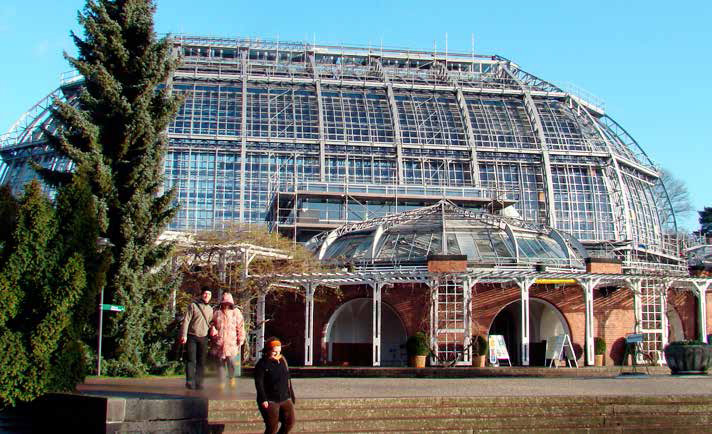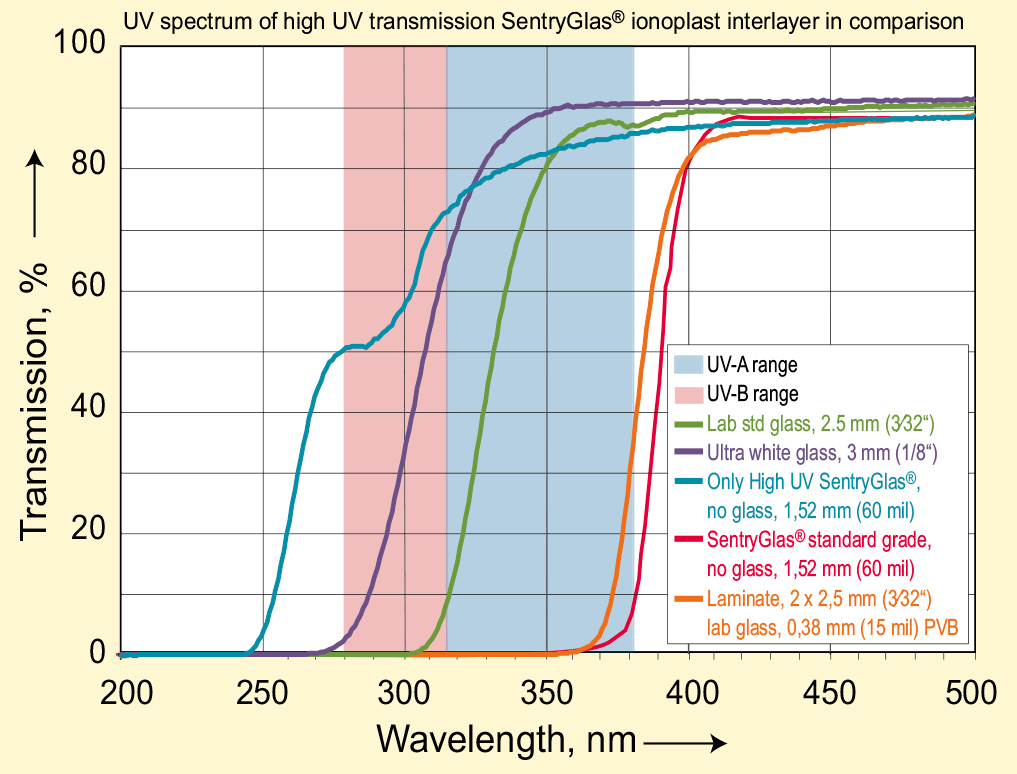Advanced Interlayer Solutions Division Projects Botanical Garden Berlin
ADVANCED INTERLAYER SOLUTIONS


One of the largest self-supporting display greenhouses in the world.
Following the renovation of the Grand Pavilion (das Große Tropenhaus, first built in 1906) at Berlin’s Botanical Garden, daylight enters through hundreds of small, heat-insulating yet highly light-permeable glass panes onto one of the world’s most significant collections of rare and endangered tropical plants.
The inner panels used in the double-glazing for the overhead sections of the pavilion are made of laminated safety glass using stiff and strong SentryGlas® ionoplast interlayers. For the first time in Germany – following its “special approval” – a special “UV-transmissible” grade of SentryGlas® is used for this application, thereby sustaining the active growth of the plants and safeguarding their preservation.
Measuring 60 m long, 29 m wide and 26.5 m high (197 by 95 by 87 ft), the Grand Pavilion is one of the largest self-supporting display greenhouses in the world, built without obstructive interior pillars. Its transparent shell, attached to a supporting structure, has a total area of 4,500 m² (48.000 sq ft), approximately 60 percent of which is overhead. Over the years, the shell had become both dull and leaky, making its extensive reconstruction essential. Acting as the client, the Freie Universität Berlin assigned the general planning of the project to the Berlin office of HAAS Architekten BDA. The work was completed in the autumn of 2009.
Adoption of UV-transparent glass follows earlier use of similarly-made laminated glass in Barcelona at an Amazonian rainforest exhibit
During the renovation work, the complete façade was replaced.During this process, high expectations were made in terms of safety and protection, heat insulation and the preferably unobstructed transmission of natural sunlight, including its UV portions. Meeting these requirements meant a venture into new territory, as such a versatile glass façade design had never been attempted anywhere else. The solution was developed by the architects and client in partnership with Radeburger Fensterbau GmbH (Radeburg-Bärwalde, Germany), the glass refiner and manufacturer Glas Trösch (Switzerland and Germany) and Kuraray Glass Laminating Solutions as the producer of laminated glass interlayers, which are used in architectural projects around the world. For the overhead sections, the multifunctional double-glazing consists of an external panel made of heatstrengthened single pane safety glass and an inner panel made of laminated safety glass. For each panel, the team selected EUROWHITE® from Glas Trösch, a highly transparent, extrawhite float glass with a low iron-oxide content, supplied with a LUXAR ® anti-reflex coating on the second surface. Its good heat insulation performance – the Ug-value measures 1.1 W/m² K – is the result of using a noble gas filling between the panels and a SILVERSTAR® EN plus Low-E coating on the third surface.
Application
Region
Interlayer
Architect
Laminator
Glazing Contractor

Keep up with the very latest news in laminated glass innovations and procedures by subscribing to our free Laminated Glass News.
Subscribe here